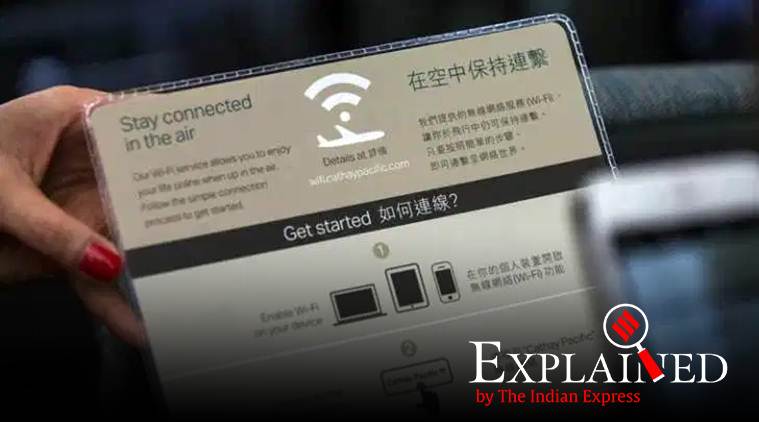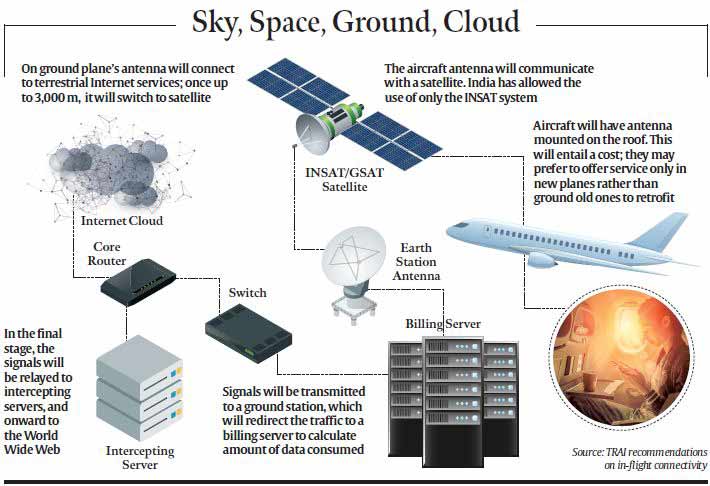Fact Check: How will in-flight WiFi work?
The Telecom Commission had given its green signal to in-flight connectivity of Internet and mobile communications on aircraft in Indian airspace in 2018.
 Instruction for in-flight wifi is seen onboard an aircraft. (Representative image, source: Bloomberg)
Instruction for in-flight wifi is seen onboard an aircraft. (Representative image, source: Bloomberg)
The government has permitted airlines operating in India to provide in-flight WiFi services to passengers. The pilot “may permit the access of Internet services by passengers on board an aircraft in flight, through Wi-Fi on board, when laptop, smartphone, tablet, smartwatch, e-reader or a point of sale device is used in flight mode or airplane mode”, an official notification said. The Telecom Commission had given its green signal to in-flight connectivity of Internet and mobile communications on aircraft in Indian airspace in 2018.
THE TECHNOLOGY: Broadly, in-flight connectivity systems use two kinds of technologies. One, an onboard antenna picks up signals from the nearest tower on the ground, and unless the aircraft flying over a large space with no towers (such as a water body), the connection will remain seamless up to a certain altitude.
Otherwise, satellites can be used to connect to ground stations in the same way that satellite TV signals are transmitted. Data is transmitted to a personal electronic device through an onboard router, which connects to the plane’s antenna. The antenna transmits the signals, through satellites, to a ground station, which redirects the traffic to a billing server that calculates the data consumption. It is then relayed to the intercepting servers, and to the World Wide Web.

Once flight mode is activated, the plane’s antenna will link to terrestrial Internet services provided by telecom service providers; when the aircraft has climbed to 3,000 m (normally 4-5 minutes after take-off), the antenna will switch to satellite-based services. This way, there will be no break in Internet services to passengers, and cross-interference between terrestrial and satellite networks will be avoided.
THE COST: Airlines will have to bear the initial cost of installing antennae on aircraft. Some airlines have said it would be easier to have the equipment installed on their new aircraft rather than taking planes out of service for retrofitting. The additional cost could find a way into ticket prices. Apart from the equipment, airlines will have to bear additional fuel costs, given the extra weight and drag aircraft will face due to the antenna.
Globally, some airlines offering onboard WiFi offer a small volume of free Internet before asking the customer to buy a pack. Some others provide limited or unlimited Internet in Business and First class. Price plans may be volume-based or volume- and time-based. In any case, Internet in the sky is not likely to be cheap.
📢 Express Explained is now on Telegram. Click here to join our channel (@ieexplained) and stay updated with the latest
THE USES: In general, WiFi on a plane is slower than on the ground — even though this is changing with newer technologies. Technology and laws allow calls to be made from aircraft, but many airlines do not want noisy cabins. A TRAI paper from a couple of years ago said over 30 airlines offer onboard connectivity.
- 01
- 02
- 03
- 04
- 05






































